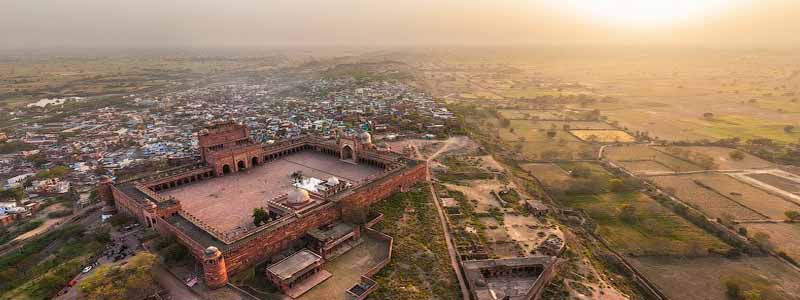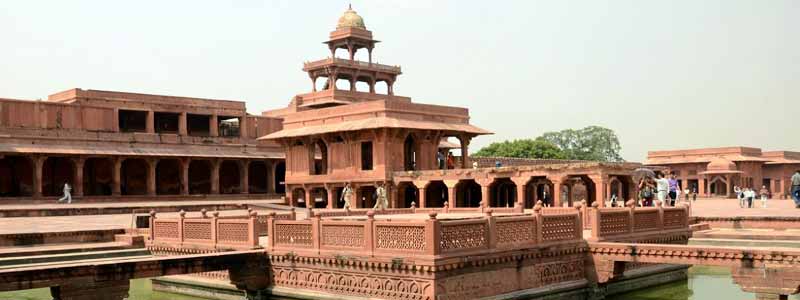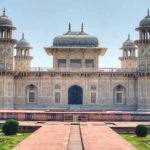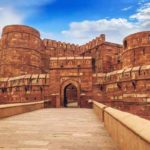Fatehpur Sikri Agra or ‘the City of Victory’ is a fortified city in Agra, Uttar Pradesh. It was founded in 1569 by the Great Emperor of the Mughal dynasty Akbar. The palace city atop a rocky ridge, confined within walls on its three sides and a lake in the foreground, was designed by Tuhir Das using Indian principles of art Agra Tourism.
The structures in the city have been designed following the styles of Hindu, Jain and Islamic architecture, using red sandstone, which is also called as ‘Sikri sandstone‘. The city can be entered through several gates that are erected at different points along the wall bordering the fort. The gates are namely the Chandanpal Gate, the Agra Gate, the Tehra Gate, the Lal Gate, the Delhi Gate, the Birbal Gate, the Gwalior Gate, the Ajmere Gate and the Chor Gate.

INTERESTING Facts about Fatehpur Sikri
- Fatehpur Sikri Agra was the Mughals’ first planned city in India. Fatehpur Sikri was much larger and more populous than London at the time, according to Ralph Fitch, a 16th-century English traveller. Fatehpur Sikri’s structure and layout influenced the design and construction of Shahjahanabad, or Old Delhi.
- In 1619, when the region was ravaged by bubonic plague, Jahangir, Akbar’s son, stayed at Fatehpur Sikri for three months.
- After abandoning the city, Akbar only came back once before dying.

Fatehpur Sikri: History
Fatehpur Sikri Agra is considered to be the crowning architectural legacy of Mughal Emperor Akbar who founded it in 1571. The city derives part of its name from a village called Sikri, which existed on the very spot where it was constructed. History has it that Akbar had visited this village and consulted a Sufi saint by the name Shaikh Salim Chishti. The saint foretold the birth of his heir and when the prophecy was fulfilled, Akbar began constructing his capital in the village.
From 1571 to 1585, Fatehpur Sikri served as the capital of the Mughal Empire. In 1573, when Akbar returned victorious from his Gujarat campaign, the city was named Fatehpur Sikri or the City of Victory to commemorate the win. When he proceeded towards Punjab in 1585 to fight for his next military campaign, he abandoned the city. It is believed that the city was abandoned due to two primary reasons – the lack of water and the unrest in the north-western part of the country. Akbar later shifted the capital of his empire to Lahore and then to Agra, and by 1610, Fatehpur Sikri became a fully abandoned city.
Much later, when the colonial rulers occupied Agra in 1803, they established an administrative center here, which remained functional until 1850. The monuments at Fatehpur Sikri Agra were repaired in 1815 under the orders of the Marquess of Hastings Agra Monuments.

Fatehpur Sikri Architecture
Fatehpur Sikri Agra is a fortified city that is enveloped by 6-km long defensive walls with several entryways on three sides while fourth side borders on an artificial lake. The city features the Indo-Islamic architectural style and is constructed using red sandstone Agra Tour Packages.
A number of palaces, mosques, monuments, public buildings, and other structures adorn the city, each of which displays exemplary architectural beauty. Within this fortified city, Akbar also built three palaces for each of his three favorite wives. There are also eight gates that serve as entryways to the city, including the Delhi Gate, the Agra Gate, the Lal Gate, the Gwalior Gate, and the Ajmeri Gate, among others.
Among the most famous structures of the city is the Jama Masjid, one of the largest mosques in India which is functional even today. The intricate architecture of structures like the Buland Darwaza, the Tomb of Salim Chisti, and the Panch Mahal attracts tourists from all over the country and beyond.
Best time to visit
Fatehpur Sikri Agra can be visited between February and April and between July and November as the climate is very pleasant. In the rest of the months, the climate is either very hot or very cold which can cause discomfort to the visitors.
How to Get There
Reaching Fatehpur Sikri from Delhi is convenient as the destination is well connected with the capital of the country by all modes of transportation.
BY AIR : The nearest airport to Fatehpur Sikri is the Kheria Airport. Regular flights ply from Delhi to Agra. The airport is only 40 km away from the city and hired taxis are available at a very affordable charge.
BY RAIL : Reaching Agra on train is a good idea for the travelers who want to make their tour cheaper and yet memorable. From Delhi quite a few trains run on regular basis. The nearest railway station to Agra City is the Agra Cant Railway Station.
BY ROAD : An efficient network of roads connects this amazing tourist spot with all major cities. However, if one is leaving from Delhi, Yamuna Expressway-Mathura-Fatehpur Sikri is the best way to reach at your destination. UPSRTC bus service is available to reach from Bharatpur (25km), Delhi and other major cities.








